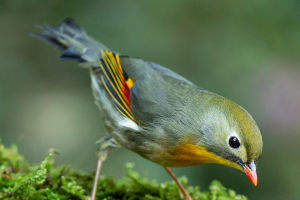There are a lot of sheep in New Zealand. There are in fact an estimated 10 sheep to every person. So if the current population of New Zealand is 4,432,174,then that would mean the population of sheep would be 44,321,740. Yes over 44 million sheep!
Sheep started to become a primary component of New Zealand’s economy in the 1850s. It was soon after this that wool became one of the country’s most important exports. In the early 1880s, practices to successfully export frozen meat became known and lamb and sheep meat also became an export.
Even today, most sheep in New Zealand are of the Romney breed. This is a breed of sheep from England that is hardy and able to deal with many different kinds of weather. Another type of sheep found in New Zealand is the Merino sheep. This is a Spanish sheep breed that is famous for its luxurious wool.
Sheep are so popular in this part of the world that some people keep some of the animals just as pets. They make better pets than you might realize and are intelligent and affectionate. They do, however, require special kinds of care and veterinary attention. A large property is also essential, especially if you will set your sheep to graze in a pasture (or more than one pasture, if you are going to use a rotating pasture system).
Sheep are easy keepers. You don’t need a large pasture full of fertilized grass to keep sheep successfully.
Instead, they do very well in a fairly small pasture full of brush and weeds, and keeping your sheep on this kind of land will actually improve the land. They make short work of undesirable vegetation, and their manure is marvelous for improving the quality of the soil.
Additionally, sheep are a lot easier to handle than cattle. They are smaller, and they have a gentler personality. Contrary to popular belief, sheep can swim, are fairly smart and trainable and will learn to come when called and cooperate with every day handling. This includes milking and shearing.
Your choice of sheep will depend a great deal on your priority. If you want to keep sheep more for meat and/or wool, here are some of the best breeds:
1.The Corriedale – New Zealand’s first breed
The Corriedale’s origins lie in early experiments in crossing Merinos with long-wool breeds. James Little, who managed Corriedale Station in North Otago, began trying to establish a fixed inbred halfbred (a halfbred which breeds true to type) in 1868 when he mated over 600 Merino ewes with Romney rams. Later he continued his experiments.
At the Levels Station, William Soltau Davidson began a similar breeding programme in 1874 using Lincoln rams. By the 1890s the inbred halfbred was already widely known as the Corriedale, and this name was officially sanctioned by the New Zealand Sheep Breeders’ Association in 1905.
2.Halfbred
The Halfbred, or ‘colonial’ Halfbred, was bred in an attempt to retain the Merino’s wool quality, foraging ability and hardiness, while increasing its lamb production and improving its carcass conformation for the meat trade.
Unlike the Corriedale – which was inbred after the initial cross of a Merino and a long-wool – the Merino influence is maintained in the halfbred. Commonly, a Merino is crossed with a Romney or English Leicester to produce a first-cross halfbred ram, which is then mated with a halfbred ewe flock. The Halfbred can cope with harder conditions than the Corriedale, and is found in the South Island foothills and high country.


